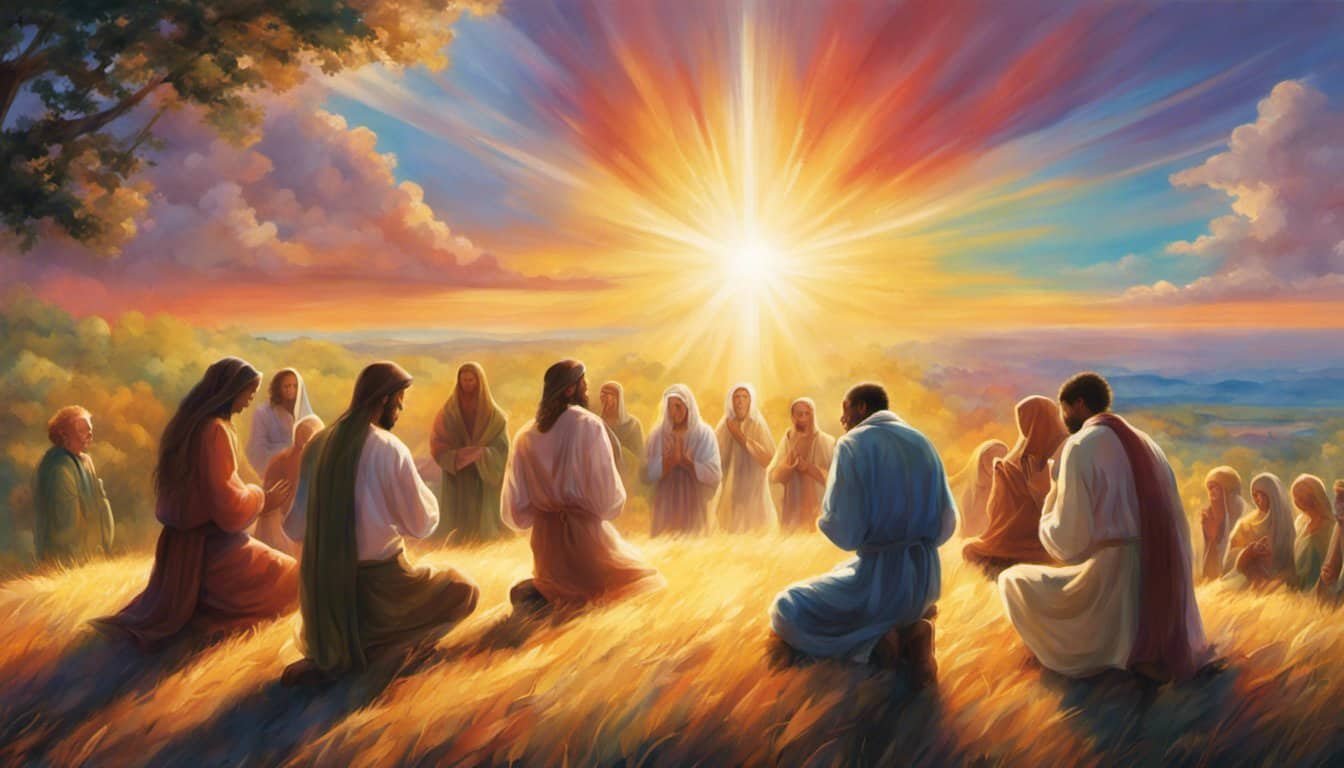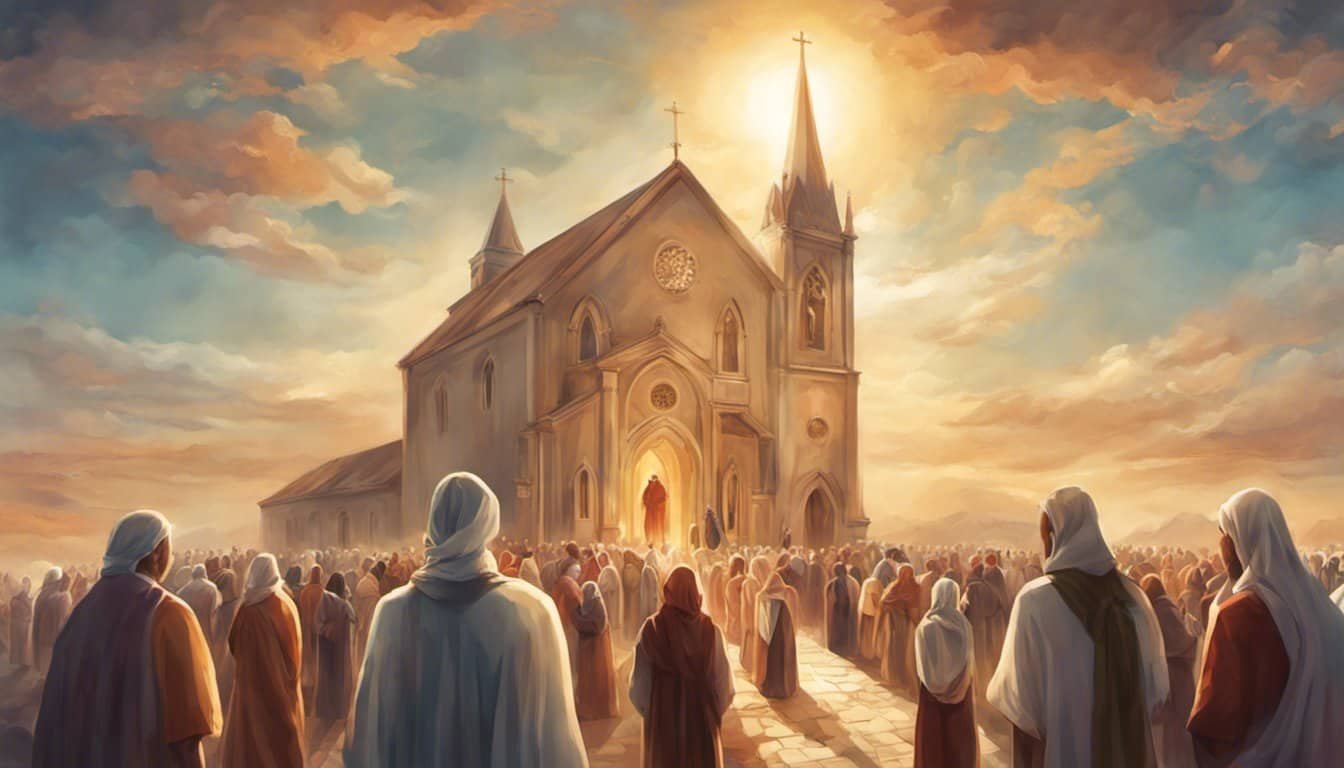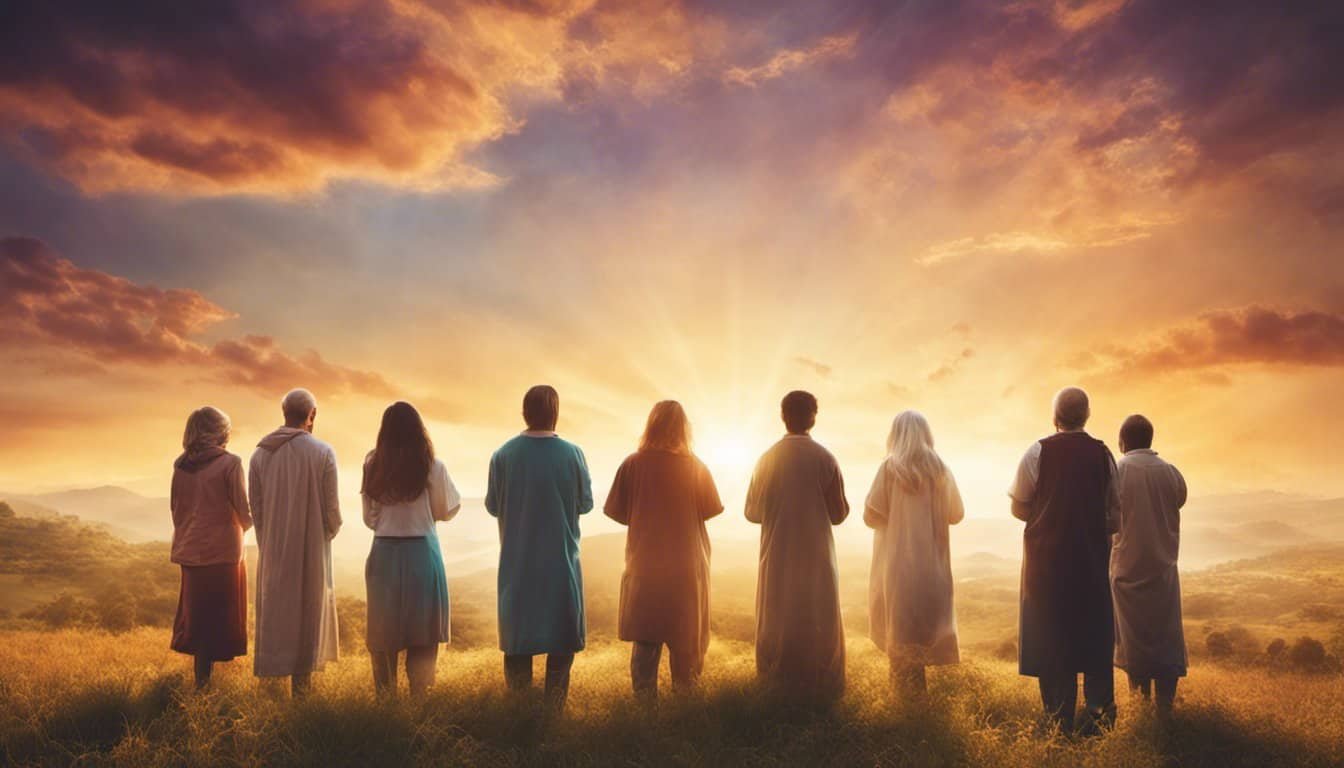The birth of Jesus Christ is a momentous event in history that has shaped the world – and sparked immense curiosity about his birthdate. Legends and theories abound, but what do we really know? Join us on an investigative journey to uncover the actual year of Jesus Christ’s birth, drawing on both historical and biblical records. In this article, we’ll delve into fascinating tales and mysteries, as we uncover the true story behind the world’s most celebrated religious figure. Are you ready to discover the real story? Keep reading!
The Historical Context of Jesus Christ’s Birth
To truly understand when Jesus Christ was born, we must first discuss the historical context of the time period. At the time of Jesus’ birth, the Roman Empire controlled much of the known world. Herod the Great was the ruler of Judea, and tensions were high between the Jews and the Romans.

According to historical records, the Roman Empire used a calendar system called the Julian calendar. This system began counting years from the founding of Rome, or ab urbe condita, which is estimated to be 753 BC. However, the birth of Jesus Christ is not recorded in this system, and it wasn’t until centuries later that the system of counting years as either “AD” or “BC” was established.
In addition to the historical records, the Bible provides some insight into the context of Jesus’ birth. The Old Testament contains a number of prophecies about the coming of a Messiah, or savior, who would be born in the city of Bethlehem. The New Testament, specifically the Gospels of Matthew and Luke, provide more detailed accounts of Jesus’ birth and early life.

As we explore these accounts, it’s important to remember that while the Bible is considered to be the inspired word of God by Christians, it is not a historical document in the sense that it provides a comprehensive and factual account of events. Rather, it is a collection of writings produced by different authors over a span of several centuries, each with their own perspectives and agendas.
Here are some key points to consider when examining the historical context of Jesus Christ’s birth:
- The Roman Empire was in control of much of the known world at the time
- Herod the Great was the ruler of Judea, where Jesus was born
- The Julian calendar was in use at the time, but it didn’t count years in the way we do today
- The Old Testament contains prophecies about the coming of the Messiah in Bethlehem
- The New Testament provides more detailed accounts of Jesus’ birth and early life, but must be read in context and with an understanding of its historical and cultural context
By taking the time to understand the historical context of Jesus Christ’s birth, we can gain a deeper appreciation for the significance of his life and teachings. In the next section, we’ll take a closer look at what the Bible says about Jesus’ birth and the events surrounding it.
What the Bible Says About Jesus Christ’s Birth
The Bible is the primary source of information about the birth of Jesus Christ. The Nativity story, as told in the Gospels, is the most commonly known account of Jesus’ birth. The Gospel of Matthew and the Gospel of Luke provide the most detailed accounts of his birth.
According to Matthew, Joseph and Mary lived in Nazareth, and Mary was already pregnant when Joseph learned of her condition. An angel appeared to Joseph in a dream and told him not to be afraid to take Mary as his wife, for the child had been conceived by the Holy Spirit and would be the Son of God. After Jesus was born, the wise men came to Jerusalem, following a star that led them to Bethlehem, where they found Jesus.
Luke’s account of Jesus’ birth includes the story of the shepherds, who were tending their flocks on the night when Jesus was born. An angel appeared to them, announcing the birth of the Messiah in Bethlehem, and they went to see the baby. Luke also notes that Mary and Joseph went to Bethlehem for the census, as Joseph was of the house and lineage of David.
The biblical accounts of Jesus’ birth emphasize his divine origin and his role as the Savior of the world. They also highlight the fulfillment of prophesy from the Old Testament, such as Isaiah’s prediction of a virgin giving birth to a son who would be called Immanuel (God with us).
While the Nativity story is a beloved part of the Christmas season, it is important to remember its spiritual significance. Through his birth, Jesus became a human being, making it possible for him to fulfill his mission of bringing salvation to all who would believe in him.
In summary, the Bible provides a detailed account of the birth of Jesus Christ, highlighting his divine nature and his role as the Savior of the world. It also fulfilled prophesy from the Old Testament, reminding us of the importance of faith and the spiritual significance of the Nativity story.
The Nativity Story: Separating Fact from Fiction

The story of Jesus Christ’s birth as told in the Bible has become synonymous with the Christmas holiday. The nativity scene with Mary and Joseph, the three wise men, and baby Jesus in a manger is a common sight during the holiday season. But how much of the nativity story is actually biblical fact, and how much is fiction?
Here are some key details of the nativity story, along with what biblical and historical records say about them:
Jesus was born in Bethlehem: This is a well-established fact both biblically and historically. The Bible says that Joseph and Mary traveled to Bethlehem because it was the town of David, and David was Joseph’s ancestor. Historical records also support the idea that Bethlehem was the birthplace of Jesus Christ.
Mary was a virgin: The Bible says that Mary was a virgin when she gave birth to Jesus. This is an important part of Christian tradition and belief in Jesus as the Messiah and Son of God.
Jesus was born in a stable and laid in a manger: The Bible says that because there was no room at the inn, Mary and Joseph had to take shelter in a stable, where Jesus was born and placed in a manger. Historical records suggest that this was likely a common practice for people traveling at that time.
The three wise men visited Jesus: The Bible says that after Jesus was born, wise men from the East visited him and brought him gifts of gold, frankincense, and myrrh. This part of the story is more difficult to verify historically, but there are some indications that it could be true. There are records of Magi or wise men in ancient societies who were known for their astrological and astronomical knowledge.
King Herod tried to kill Jesus: The Bible says that when King Herod heard about the birth of Jesus, he became afraid and ordered the killing of all male children under the age of two in Bethlehem. This event is not recorded in any historical records, but it is possible that it happened and simply went unrecorded.
Despite the popularity of the nativity story, there are some details that are not actually found in the Bible. For example, there is no mention of an innkeeper turning away Mary and Joseph, and there is no reference to the number of wise men who visited Jesus. These details have been added over time through art and popular culture.
It’s important to remember that while the nativity story may not be historically accurate in all its details, its significance lies in its message of hope and salvation through Jesus Christ. Christians celebrate the birth of Jesus as the beginning of his mission to bring salvation to humanity through his death and resurrection.
In conclusion, the nativity story is a central part of Christian tradition and belief. While some details may not be historically accurate, the message of hope and salvation through Jesus Christ remains a powerful and enduring one.
The Significance of Bethlehem and King Herod
The city of Bethlehem holds a significant place in Christian tradition. It is believed to be the birthplace of Jesus Christ, the savior and son of God. The name “Bethlehem” comes from Hebrew and translates to “House of Bread,” which is fitting as Jesus is often referred to as the “Bread of Life.” However, the story of Jesus’ birth is not complete without understanding the role of King Herod in the events that transpired.
King Herod was a ruler appointed by the Roman Empire to govern over Judea, the region that included Bethlehem. According to the Gospel of Matthew, when the wise men, also known as the magi, came to Jerusalem to inquire about the birthplace of the “King of the Jews,” Herod became alarmed and suspicious of this new “king.”
In an attempt to eliminate any perceived threat to his power, Herod ordered the massacre of all male infants in Bethlehem who were two years old or younger. This tragic event is known as the “Massacre of the Innocents” and is remembered in Christian tradition as a reminder of the evil that can exist in the world and the need for a savior to bring salvation and redemption.
Despite Herod’s efforts, however, Jesus and his family were able to escape to Egypt and avoid the massacre. This event highlights the divine protection and guidance that Jesus received as the messiah and the chosen one to bring salvation to the world.
The significance of Bethlehem and King Herod in the story of Jesus Christ’s birth extends beyond just the events of that time. It also serves as a reminder of humanity’s need for a savior and the lengths that God will go to ensure that His plan of salvation comes to fruition. The story of King Herod’s jealousy and desire for power also serves as a warning against the dangers of greed and selfishness.

In conclusion, the story of Jesus Christ’s birth is not complete without understanding the historical and biblical context surrounding Bethlehem and King Herod. The tragic events of the Massacre of the Innocents serve as a reminder of the need for salvation and redemption, while the divine protection of Jesus and His family highlights the power and love of God. Bethlehem and King Herod are integral parts of the nativity story and continue to hold significance in Christian tradition today.
The Mystery of the Magi and the Star of Bethlehem
Have you ever wondered who the Magi were and what the significance was behind the star of Bethlehem? According to the gospel of Matthew, three wise men, also known as the Magi, followed a star in the sky to find the birthplace of Jesus Christ. This event is often depicted in Christmas pageants and plays, with children dressed up as the wise men carrying gifts of gold, frankincense, and myrrh.
But who were these men, and what was the star they were following? The Bible doesn’t give us much information about the Magi, only that they were from the east and were likely astrologers or wise men who studied the stars and the sky. It’s possible they were from Persia or Babylon, and they may have been influenced by the writings of the prophet Daniel from the Old Testament.
As for the star, there are a few theories as to what it could have been. Some believe it was a comet, while others suggest it was a supernova or a planetary alignment. However, there is no definitive answer, and the exact nature of the star remains a mystery.

Despite the lack of information, the story of the Magi and the star adds to the religious significance and beauty of the Nativity. It shows that people from different parts of the world came to honor the newborn King, and that God’s plan to send his son to save the world was not just for the people of Israel, but for all of humanity.
In summary, the story of the Magi and the star of Bethlehem is a beautiful and mysterious part of the Nativity story. While we may never know the exact nature of the star, we can appreciate the significance it holds in the Christian tradition.
Jesus Christ: From Birth to Death and Resurrection
The life of Jesus Christ is the foundation of Christianity. Christians believe that Jesus was not just a prophet or a good teacher, but the Messiah, the Son of God, sent to save humanity. According to the Christian faith, Jesus was born of a virgin in Bethlehem and lived a sinless life before being crucified, buried, and rising again on the third day.
Jesus’ birth was a miraculous event, foretold by the Old Testament prophets and recorded in the Gospels of Matthew and Luke. The birth of Jesus is celebrated by Christians worldwide on Christmas day. The gospel accounts provide some details about his childhood, such as his visit to the temple at age 12 and growing up in Nazareth. Jesus began his public ministry at age 30, traveling throughout the region and preaching the Kingdom of God.
Jesus’ teachings were radical and challenging, emphasizing love, forgiveness, and humility. He performed numerous miracles, healing the sick, calming storms, feeding thousands, and even raising the dead. Such acts of compassion and miracles drew large crowds, and Jesus was soon seen as a threat to the religious leaders of his day.

As a result, the authorities had Jesus put on trial and ultimately sentenced him to death by crucifixion. Jesus was publicly executed, dying on a Roman cross outside the walls of Jerusalem. After his death, he was placed in a tomb, but on the third day, his followers found the tomb empty. Christians believe that Jesus rose from the dead, defeating death and providing salvation for those who believe in him.
Jesus’ death and resurrection are the focal point of the Christian faith, celebrated on Easter Sunday. Christians believe that through Christ’s death and resurrection, God offers forgiveness of sins and the hope of eternal life. The message of Jesus Christ continues to influence people worldwide, and his teachings have inspired countless individuals throughout history.
Despite some historical and theological debates over the exact year of Jesus’ birth and the accuracy of the gospel accounts, Christians hold firmly to their belief that Jesus is the Messiah, the Savior of the world. As the cornerstone of Christian faith, Jesus’ life, death, and resurrection continue to inspire hope, love, and grace.
The Age-Old Debate: Was Jesus Christ Really Born in 0 AD?
It’s a question that has perplexed scholars and theologians alike for centuries: when was Jesus Christ really born? While the Bible is clear on the events surrounding Jesus’s birth, it does not give us a specific year. This has led to a variety of theories and hypotheses regarding the year of Jesus’s birth. Here are a few things to consider:
The Anno Domini (AD) System: The AD system that we use to mark time is based on the supposed year of Jesus Christ’s birth. However, it was not until the 6th century AD that a monk named Dionysius Exiguus attempted to calculate the year of Jesus’s birth. His calculations were not entirely accurate, and it is now believed that Jesus was probably born a few years before the year 1 AD.
The Gospel of Luke: The Gospel of Luke provides some clues as to the timing of Jesus’s birth. Luke states that Jesus was born during the reign of Caesar Augustus, when a census was being taken. Historians believe that this census took place around 6-4 BC.
The Star of Bethlehem: The story of the Star of Bethlehem, which guided the Magi to Jesus’s birthplace, has been the subject of much debate over the years. Some scholars believe that the Star may have been an actual astronomical event, such as a supernova or a conjunction of planets. Others argue that it was a purely symbolic or mythological element added to the story.
Other Historical Records: There are a few other historical records that shed some light on the timing of Jesus’s birth. For example, the Roman historian Suetonius mentions a disturbance among the Jews during the reign of Augustus, which may have been connected to the birth of Jesus. Additionally, the Jewish historian Josephus mentions the reign of Herod the Great, who features prominently in the Nativity story.
Despite all these clues, we may never know the exact year of Jesus Christ’s birth. However, the important thing is not the year, but the fact that Jesus was born at all. Christians believe that Jesus is the Messiah, the Savior, and the Son of God, who came to Earth to die on the cross for the salvation of humanity. Whether Jesus was born in 0 AD or a few years earlier, this central belief remains the same.

So, as we celebrate Christmas each year, let us focus not on the historical accuracy of the Nativity story, but on the religious significance of Jesus’s birth. Let us remember that he came to bring us hope, love, and eternal life.














